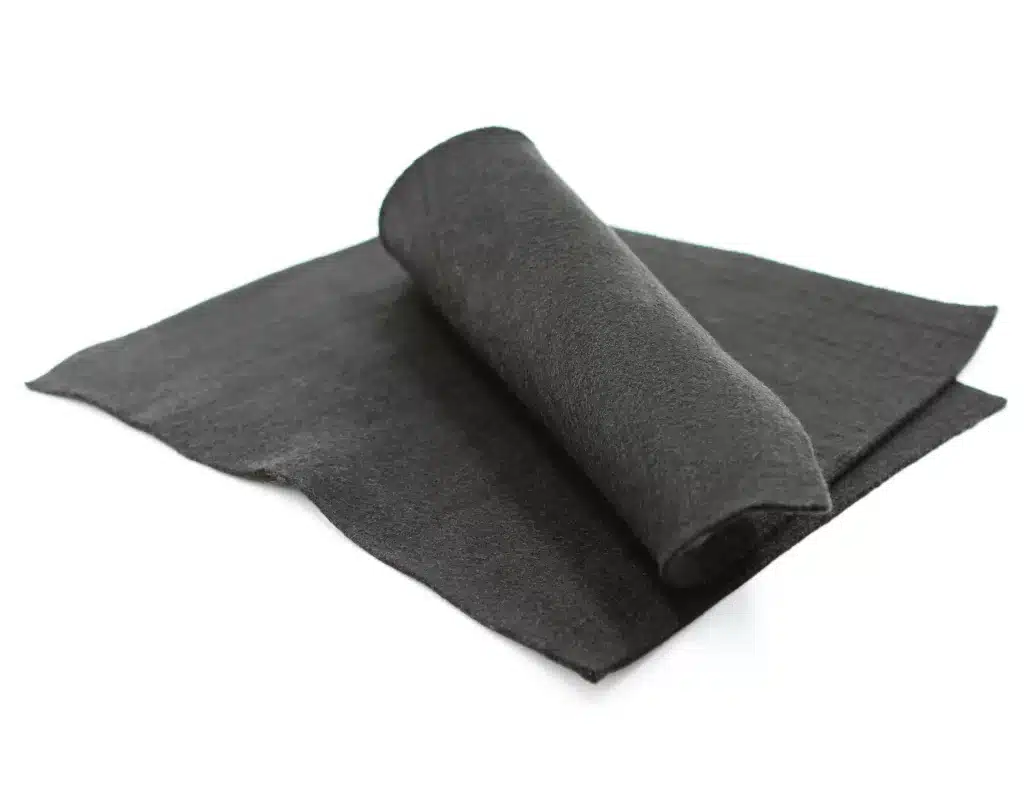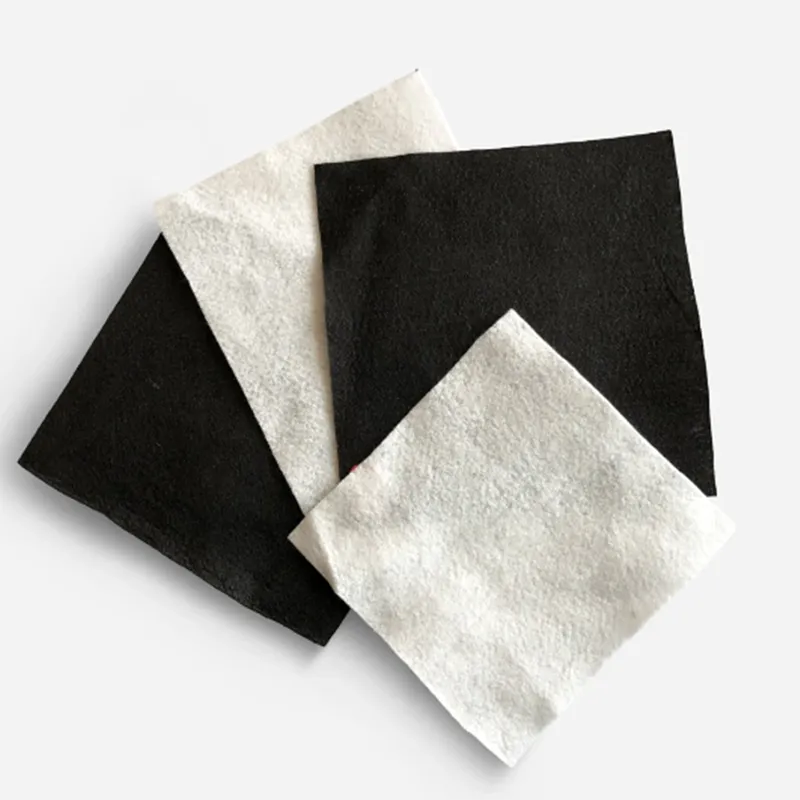+86-159 9860 6917
info@geofantex.com
geofantex@gmail.com
+86-400-8266163-44899
Geotextiles are innovative, permeable technical textiles widely used in civil engineering and environmental applications. Designed to interact with soil, rock, or other building materials, geotextiles offer a range of properties that contribute to stability, filtration, separation, and reinforcement. These permeable fabrics not only improve drainage due to their permeability but also reinforce soils and surfaces with their high tensile strength. Additionally, geotextiles are durable, often outlasting the structures they protect, and are resistant to harsh conditions, including high temperatures, freezing, aging, corrosion, and acidic soil environments. With lightweight construction, geotextiles serve multiple roles such as separation of materials, filtration, and even protection, making. them invaluable in construction and environmental management projects. In this article, we’ll explore the diverse properties of geotextiles, their primary applications, and the distinct advantages they bring to these fields.
What are the three main uses of a geotextile?
Geotextiles have three core applications in construction and environmental projects: draining water, separating different soils from each other, and reinforcing soil.
- Filtration: Geotextiles allow water to flow through while preventing soil particles from passing, making them essential in drainage systems to control soil erosion and promote stability. By effectively draining water, they help manage moisture and reduce soil movement, which is crucial in many structural applications.
- Separation: By preventing the mixing of different soil layers, geotextiles maintain the integrity of structural layers, which is essential in road construction and other infrastructural projects. This separation of different soil types ensures stability and longevity for foundational layers, which is vital in areas subject to heavy load-bearing demands.
- Reinforcement: Geotextiles add tensile strength to soil, which supports the construction of slopes, retaining walls, and embankments, enhancing stability and longevity. In reinforcing soil, geotextiles distribute loads more evenly, allowing for greater resilience and reliability in challenging environments.

What are the properties of geotextiles?
Geotextiles possess several key properties that make them versatile in various applications:
- Permeability: They allow water and other liquids to pass through, essential for filtration and drainage.
- Tensile Strength: Geotextiles provide durability and support, especially in high-stress environments such as retaining walls and roadways, where the material’s ability to resist stretching and deformation is crucial.
- Chemical Resistance: They withstand chemicals in soil and construction materials, ensuring longevity in challenging environments.
- Puncture and Tear Resistance: Geotextiles are tough and resistant to physical damage, offering high resistance to punctures and tears, which makes them ideal for heavy-duty applications where sharp objects or mechanical stresses are a concern.
- Apparent Opening Size (AOS): The apparent opening size of geotextiles plays a critical role in filtration, as it determines the size of particles that can pass through, ensuring efficient drainage while preventing clogging.
- Ultraviolet (UV) Resistance: Some geotextiles are designed to resist UV degradation, making them suitable for long-term outdoor use, especially in applications exposed to sunlight for extended periods.
What are the advantages of geotextiles?
Geotextiles offer several significant advantages in construction and environmental applications:
- Enhanced Stability: By reinforcing and stabilizing soils, geotextiles improve the durability of structures, roads, and embankments. They play a key role in soil stabilization, ensuring long-term support in areas subject to heavy loads or shifting ground.
- Cost-Effectiveness: Geotextiles reduce the need for traditional, often more expensive, materials like concrete or steel in various applications. Their ability to provide reinforcement and separation reduces overall project costs while maintaining high performance.
- Erosion Control: They are highly effective in controlling soil erosion, especially in drainage and shoreline projects, preserving landscapes, and preventing sediment runoff. Their filtration and protection properties help prevent soil displacement while allowing water to pass through, safeguarding the environment.
- Environmental Benefits: By stabilizing soil, managing water flow, and improving drainage, geotextiles help protect ecosystems in sensitive areas, such as wetlands or shorelines. Their environmental sustainability lies in their ability to provide long-lasting solutions without the need for extensive maintenance or resource-intensive alternatives.
What are the 6 key applications for geotextiles?
Here’s a revised version of your paragraphs with the integration of “separation, filtration, drainage, reinforcement, sealing, and protection” while maintaining the original meaning:
- Road Construction: Geotextiles provide separation, filtration, and reinforcement in road bases, ensuring enhanced stability, drainage, and durability. Separating different soil layers prevents contamination and promotes efficient water flow, which contributes to the overall performance of the road structure.
- Erosion Control: Geotextiles are widely used along riverbanks, shorelines, and slopes to prevent soil erosion. They offer protection by reinforcing the ground, sealing it against water runoff, and facilitating proper drainage to stabilize the soil and maintain the integrity of the landscape.
- Drainage Systems: Geotextiles play a crucial role in drainage systems by helping to maintain water flow, filtering soil particles, and enhancing drainage efficiency. They are essential in applications like landfills, roads, and retaining walls, ensuring proper drainage, soil separation, and protection against clogging.
- Landfills: In landfills, geotextiles are employed to control leachate, manage drainage, and provide sealing and protection for the environment. Their ability to separate different layers, reinforce structures, and ensure proper filtration helps maintain the integrity of the landfill site while protecting surrounding ecosystems.
- Retaining Walls: Geotextiles reinforce and stabilize soil behind retaining walls, contributing to their strength and resistance. By improving drainage and providing protection from erosion, they ensure the long-term durability of the wall and prevent soil movement that could compromise the structure.
- Agriculture: In agricultural applications, geotextiles improve soil structure by providing separation, enhancing drainage, and controlling erosion. They facilitate better water infiltration, protect crops from excess moisture, and promote soil health, ultimately benefiting crop yield and sustainability.
Geotextiles are versatile materials with a range of beneficial properties that make them invaluable in civil engineering and environmental projects. Their applications extend across roads, erosion control, drainage, and more, offering advantages like soil stabilization, cost savings, and environmental preservation. With their specific properties—such as permeability, tensile strength, and chemical resistance—geotextiles are a key solution for modern infrastructure and ecological conservation efforts.



Get Free Sample
We’ll respond as soon as possible(within 12 hours)






















